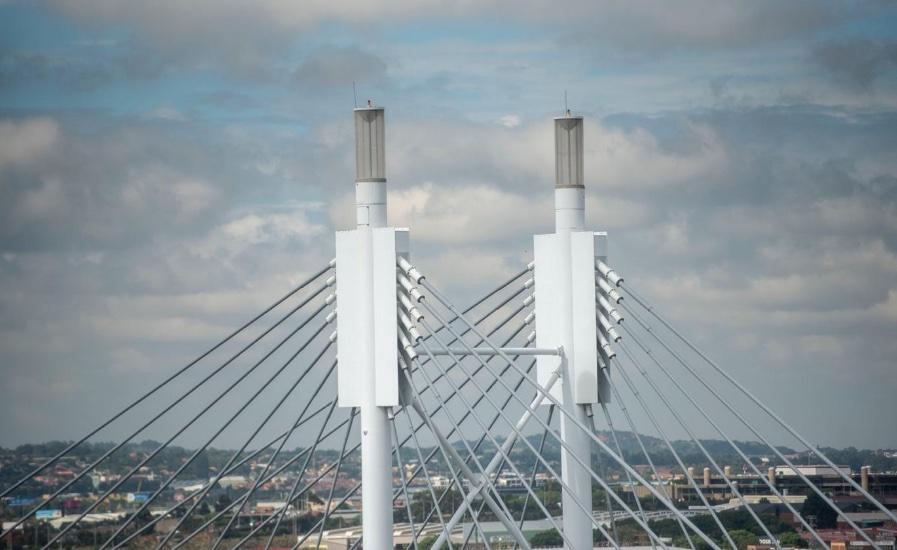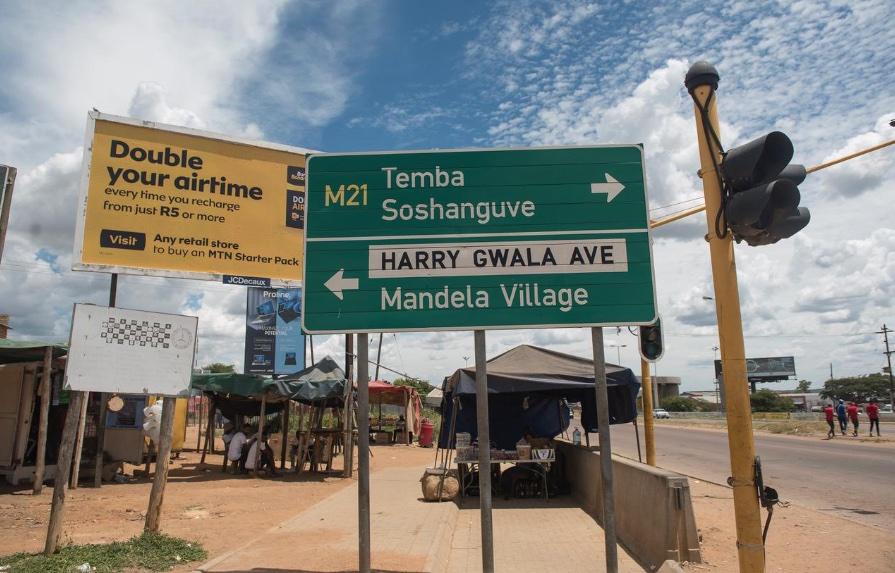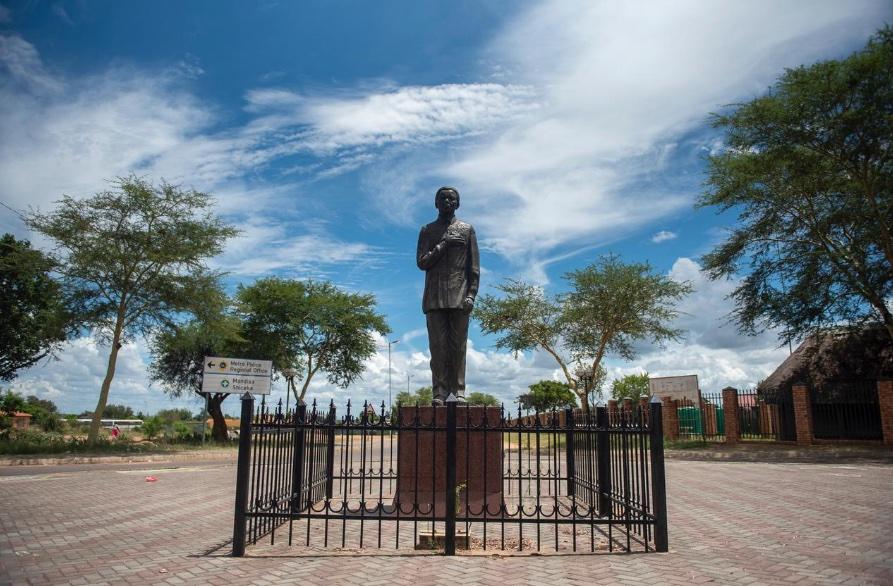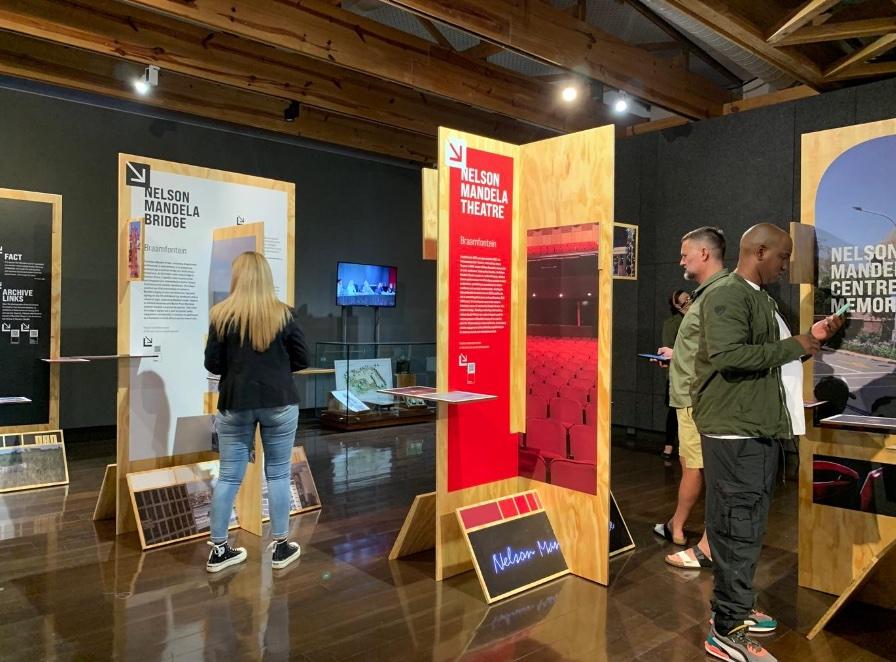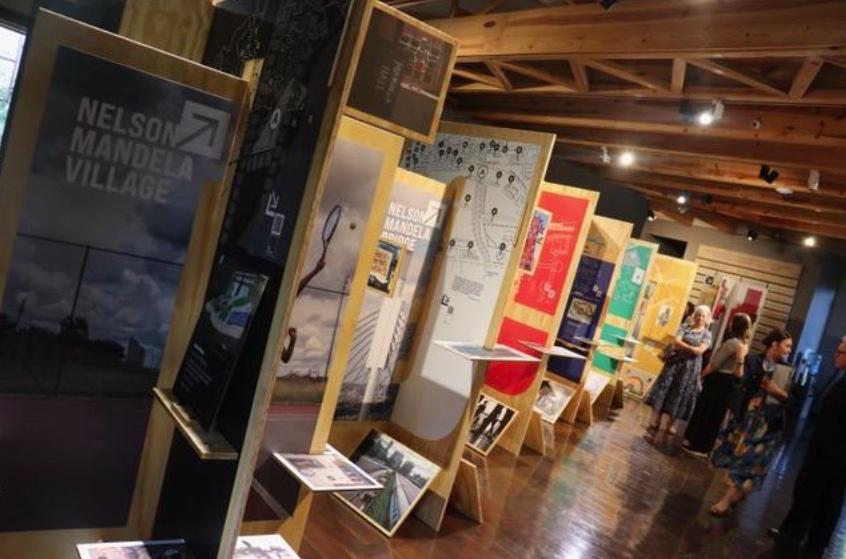
Disclaimer: Any views expressed by individuals and organisations are their own and do not in any way represent the views of The Heritage Portal. If you find any mistakes or historical inaccuracies, please contact the editor.
In South Africa, there is a common misconception that our collective cultural and historical heritage can only be engaged with through museums, heritage sites, and historical landmarks. However, when we fail to appreciate our heritage, which we unwittingly engage with daily, it limits our perspective. The lenses of graphic heritage and placemaking help us to explore the undiscovered histories in those things considered mundane. What stories – big or small – lie behind the names chosen for our roads, hospitals, and public facilities? How can these names help us learn more about ourselves, our communities and our country?
The Named after Nelson exhibition pop-up (NAN), a collaborative effort spearheaded by the Nelson Mandela Centre of Memory, Loughborough University and Tshwane University of Technology through partnerships with Celeste Mackenzie (IIE Vega School), Nkululeko Mthembu (Pista Ventures) and Totem Media, uses graphic heritage to reveal the undiscovered historical and contemporary significance of six sites in Gauteng, a place Nelson Mandela considered home for 44 years. The selected sites for the flagship project are Nelson Mandela Village, Nelson Mandela Bridge, Nelson Mandela Theatre, Nelson Mandela Centre of Memory, Nelson Mandela Park and Nelson Mandela Square.
The Nelson Mandela Bridge, inaugurated by Nelson Mandela on 20 July 2003 serves as a vital artery in Johannesburg, connecting the bustling business areas of Braamfontein and Newtown. (Alet Pretorius)
The project has sparked a newfound appreciation for graphic heritage among its contributors. Ann-Young Maharaj from the Nelson Mandela Centre of Memory has come to recognise the historical significance of seemingly mundane objects, such as drain covers or old signs, which can reveal layers of history in our surroundings that might otherwise go unnoticed.
For Totem Media, the collaboration with a university committed to making research accessible through popular means resonated strongly with their mission. The highly collaborative nature of the project made it particularly rewarding for all involved.
NAN is a welcome change and a fresh take on places named after Nelson Mandela. It prompts us to reflect on why these places were named after Mandela, what function this serves in our society, and how these places contribute to his enduring legacy. It invites visitors to explore the contrast in imagery, information and locations, using advanced, interactive technology to provide dynamic access to the priceless Archive at the Centre for Memory (ACoM) and the ever-growing Named After Nelson repository developed by Loughborough University.
Signboards in Mandela Village, Hammanskraal in Pretoria, Gauteng (Alet Pretorius)
Mandela’s influence is vividly immortalised in the village’s southern end, where visual tributes cluster. (Alet Pretorius)
The technological integration within the exhibition has been a highlight for many, including Zandile Myeka, a Metadata and Photographs Archivist at the Nelson Mandela Centre of Memory. The use of QR codes that she helped develop has enabled visitors to engage deeply with the exhibition, providing a dynamic and interactive way of connecting individuals to Madiba's legacy.
The project was born out of the curiosity of Dr Yolandi Burger of Loughborough University, who, during a bus ride in Leicester, noticed a park named after Nelson Mandela. This discovery led to the "Memorialising Mandela in the Metropolis" project, which aimed to create an impact beyond the academic realm. This initiative fostered a strong collaboration between Yolandi and Zandile, who soon connected her to other passionate individuals.
For Dr Robert Harland from Loughborough University (the principal investigator, researcher, and designer on the project), managing various roles from another country presented challenges but was rewarding. For him the project demonstrated the potential of graphic heritage in preserving and sharing Madiba's legacy.
Visitors engaging with displays at the exhibition
Nkululeko Mthembu of Pista Ventures coordinated external stakeholder workshops, bringing together diverse perspectives, expertise, and community experiences. The multidisciplinary approach, combining graphic design, exhibition design, and community engagement, was crucial for creating a comprehensive representation of Nelson Mandela's legacy.
The process of capturing Mandela’s graphic heritage through photography was led by Celeste McKenzie in collaboration with Fidel Mosupye, Alet Pretorius and a team of graduates from the Market Photo Workshop. The research team, including Dr Everardt Burger from Tshwane University of Technology, also participated in the photo-documentation of some locations, adding another layer of complexity to the project. Each participant looked through the lens with different motivations but with a common sense of inquiry. The final selection of composite images evolved from hundreds that were taken, analysed, and synthesised to depict a sense of character for each of the six sites.
For those involved in the project, there is hope that it will not only inspire impactful and positive changes in the featured places but also serve as a model for how public spaces and their naming should be continually examined and reimagined. After two years of work, the completion of the final research project represents an important effort to keep Nelson Mandela's legacy alive and relevant.
NAN invites us to celebrate the power of words, the significance of our heritage, and the enduring legacy of Nelson Mandela through this extraordinary exhibition. We encourage you to visit the Named after Nelson exhibition pop-up to experience the profound impact of graphic heritage and contribute to the collective memory and legacy of a great leader.
Named after Nelson launched on 25 April at the Centre of Memory and can be viewed until the end of September 2024. Click here for details.
Amanda Xulu is a manuscript editor, writer, researcher and exhibition developer at Totem Media. Amanda’s passion is a vibrant tapestry woven from the threads of art, education, history and politics. She employs these diverse disciplines to dissect the interconnected nature of contemporary social issues in order to reimagine a future brimming with viable, sustainable possibilities for young people in South Africa.
Comments will load below. If for any reason none appear click here for some troubleshooting tips. If you would like to post a comment and need instructions click here.

